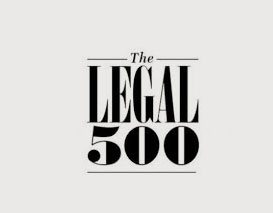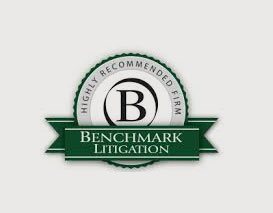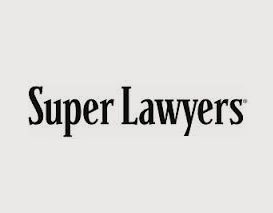General Release That Was Entered Because of Defendant’s Fraudulent Misrepresentations Held Not To Be Enforceable
Print Article- Posted on: Jan 27 2025
By: Jeffrey M. Haber
We have written frequently about the substance and scope of general releases.[1] In New York, “a valid release constitutes a complete bar to an action on a claim which is the subject of the release.”[2] If “the language of a release is clear and unambiguous, the signing of a release is a ‘jural act’ binding on the parties.”[3] For this reason, “[a] release should never be converted into a starting point for … litigation except under circumstances and under rules which would render any other result a grave injustice.”[4]
“Although a defendant has the initial burden of establishing that it has been released from any claims, a signed release ‘shifts the burden of going forward … to the [plaintiff] to show that there has been fraud, duress or some other fact which will be sufficient to void the release.’”[5] “A plaintiff seeking to invalidate a release due to fraudulent inducement must ‘establish the basic elements of fraud, namely a representation of material fact, the falsity of that representation, knowledge by the party who made the representation that it was false when made, justifiable reliance by the plaintiff, and resulting injury.’”[6]
A party that releases “a fraud claim may later challenge that release as fraudulently induced only if it can identify a separate fraud from the subject of the release.” Id. (citation omitted). “Were this not the case,” observed the Court of Appeals, “no party could ever settle a fraud claim with any finality.” Id.
In Jones v. Jacobs, 2025 N.Y. Slip Op. 00377 (1st Dept. Jan. 23, 2025) (here), the foregoing principles were before the Appellate Division, First Department.
Jones involved a breach of contract action arising out of a claimed business partnership pursuant to which the parties allegedly agreed that plaintiff would provide funds to defendant to place wagers on DraftKings Sportsbook (“DraftKings”), an online sports betting company, and split the profits. Plaintiff claimed that he made payments to defendant, that defendant placed wagers on the site, realized profits, and that the winnings either remained in defendant’s DraftKings account, or were collected and diverted by defendant.
In January 2023, plaintiff asked defendant to reimburse him for the initial loan and distribute the profits. According to plaintiff, defendant converted the funds and implemented a fraudulent scheme that was intended to impair plaintiff’s ability to recover the money.
Plaintiff allegedly made a number of requests that defendant take steps to compel DraftKings to pay the money into defendant’s account. Since DraftKings is licensed by the State of New York, and under the direct administrative supervision of the New York State Gaming Commission (“Gaming Commission”), plaintiff urged defendant to file an administrative complaint with Gaming Commission believing that this would compel DraftKings to release the money.
According to plaintiff, defendant created a fictitious “Administrative Complaint”. In doing so, defendant advised plaintiff that he needed protection from claims that he would be responsible for the failure of DraftKings to pay him the money in the event the Administrative Complaint was unsuccessful. To address this alleged concern, defendant allegedly induced plaintiff to execute a release. The release, which the parties signed, was contingent on defendant filing the complaint with the Gaming Commission by February 8, 2023. Plaintiff signed the release agreement based on defendant’s representation that he had already filed the Administrative Complaint with the Gaming Commission to compel DraftKings to release the money. When plaintiff signed the release agreement, he allegedly did not know that defendant had withdrawn the complaint minutes after it was submitted online.
Defendant maintained that the release agreement came about because of threats by plaintiff to commence legal action against him. The release agreement, which was executed on February 22, 2023, contained a broad release of liability:
Each Party … hereby releases, waives, and forever discharges the other Party … of and from any and all actions, causes or action, suits, losses, liabilities, rights, debts, dues, sums of money … contracts, controversies, agreements, promises … damages, judgments … claims, and demands, of every kind and nature whatsoever, whether now known or unknown, foreseen or unforeseen, matured or unmatured, suspected or unsuspected, in law, admiralty, or equity, which any of such Releasors ever had, now have. or hereafter can shall or may have against any of such Releasees … from the beginning or time through the date of this Agreement.
Plaintiff alleged that when he signed the release agreement, he relied upon defendant’s representations and had no means of ascertaining the truth.
Plaintiff sued defendant, asserting claims for breach of contract, fraud, conversion, unjust enrichment, breach of fiduciary duty and rescission. Defendant moved, pursuant to CPLR 3211(a)(5), to dismiss the complaint on the grounds that any claims against him had been released. The motion court granted the motion.
The motion court held that “the Release [was] clear, broad and unambiguous, encompass[ed] all claims, including those based on facts that may not be known at the time.” The motion court found that “the Release expressly stated that Plaintiff did not rely on any representations made by Defendant outside of the Release.” Therefore, concluded the motion court, “Plaintiff [was] precluded from claiming reliance on Defendant’s “artful and false communications”.
In reaching the foregoing conclusion, the motion court explained that “Plaintiff’s claim for fraudulent inducement [did not] fall[] outside the scope of the Release.” The motion court further explained that plaintiff did “not identify a separate and distinct fraud from that contemplated by the Release.” Rather, said the motion court, the fraud of which plaintiff complained pertained to defendant “depriv[ing] him of a share of gambling winnings by inducing him to sign the Release.”
Addressing the Administrative Complaint, the motion court held that the allegation was not actionable because it predated the execution of the release agreement: “the allegedly deceptive representations and conduct of Defendant concerning the complaint to the New York State Gaming Commission … involve[d] acts that pre-date[d] the Release.”
Plaintiff appealed.
The First Department “unanimously reversed” the motion court’s order.[7]
The Court found that plaintiff “sufficiently allege[d] that the general release that was the basis for dismissal of the complaint was fraudulently induced based on defendant’s misrepresentations upon which plaintiff justifiably relied.”[8] “For example,” said the Court, “the complaint alleges, among other things, that defendant induced plaintiff’s signature on the release by stating that if plaintiff did not sign, defendant would withdraw a New York Gaming Commission complaint that plaintiff had urged defendant to file, when, in fact, there was no complaint to withdraw because defendant had falsely represented he had filed the complaint.”[9]
The Court concluded “that dismissal of the complaint based on the release was not warranted” because a detailed analysis of the complaint showed that “‘plaintiff had sufficiently alleged the existence of overreaching or unfair circumstances such that enforcement of the general release[] would be inequitable.’”[10]
Takeaway
A “release is … a species of contract” that “is governed by the same principles of law applicable to other contracts.”[11] Therefore, in the absence of duress, illegality, fraud, or mutual mistake, a release will not be set aside.[12]
In Jones, plaintiff broadly released all claims he had against defendant. The release language was expansive and released “any and all” claims whether known or unknown against defendant “from the beginning or time through the date of this Agreement.” For the motion court, such language was broad enough to cover the claims asserted in plaintiff’s complaint.
However, as the First Department found, the release was induced by fraud—i.e., fraudulent representations that were separate from the fraud alleged in the complaint. ___________________________________
Jeffrey M. Haber is a partner and co-founder of Freiberger Haber LLP. This article is for informational purposes and is not intended to be and should not be taken as legal advice.
[1] See here, here, here, here, here, here, here, here, and here.
[2] Global Minerals & Metals Corp. v. Holme, 35 A.D.3d 93, 98 (1st Dept. 2006).
[3] Booth v. 3669 Delaware, Inc., 92 N.Y.2d 934, 935 (1998) (quoting Mangini v. McClurg, 24 N.Y.2d 556, 563 (1969)). See also Centro Empresarial Cempresa S.A. v. AmÉrica MÓvil, S.A.B. de C.V., 17 N.Y.3d 269, 276 (2011).
[4] Id. (internal quotation omitted).
[5] Centro Empresarial Cempresa, 17 N.Y.3d at 276 (“A release may be invalidated, however, for any of the traditional bases for setting aside written agreements, namely, duress, illegality, fraud, or mutual mistake”) (internal quotation marks and citation omitted) (quoting Fleming v. Ponziani, 24 N.Y.2d 105, 111 (1969)).
[6] Id. (quoting Global Mins. & Metals Corp. v. Holme, 35 A.D.3d 93, 98 (1st Dept. 2006)).
[7] Slip Op. at *1.
[8] Id. (citing Wimbledon Fin. Master Fund, Ltd. v. Weston Capital Mgt. LLC, 160 A.D.3d 596, 598 (1st Dept. 2018); CyCan, LLC v. Palladian Health, LLC, 217 A.D.3d 1446, 1449-1450 (4th Dept. 2023)).
[9] Id.
[10] Id. (quoting Trump v. Trump, 217 A.D.3d 594, 594 (1st Dept. 2023), lv. denied, 41 N.Y.3d 906 (2024)).
[11] Schuman v. Gallet, Dreyer & Berkey, L.L.P., 180 Misc. 2d 485, 487 (Sup. Ct., N.Y. County 1999), aff’d, 280 A.D.2d 310 (1st Dept. 2001).
[12] Toledo v. W. Farms Neighborhood Hous. Dev. Fund Co., Inc., 34 A.D.3d 228, 229 (1st Dept. 2006).





